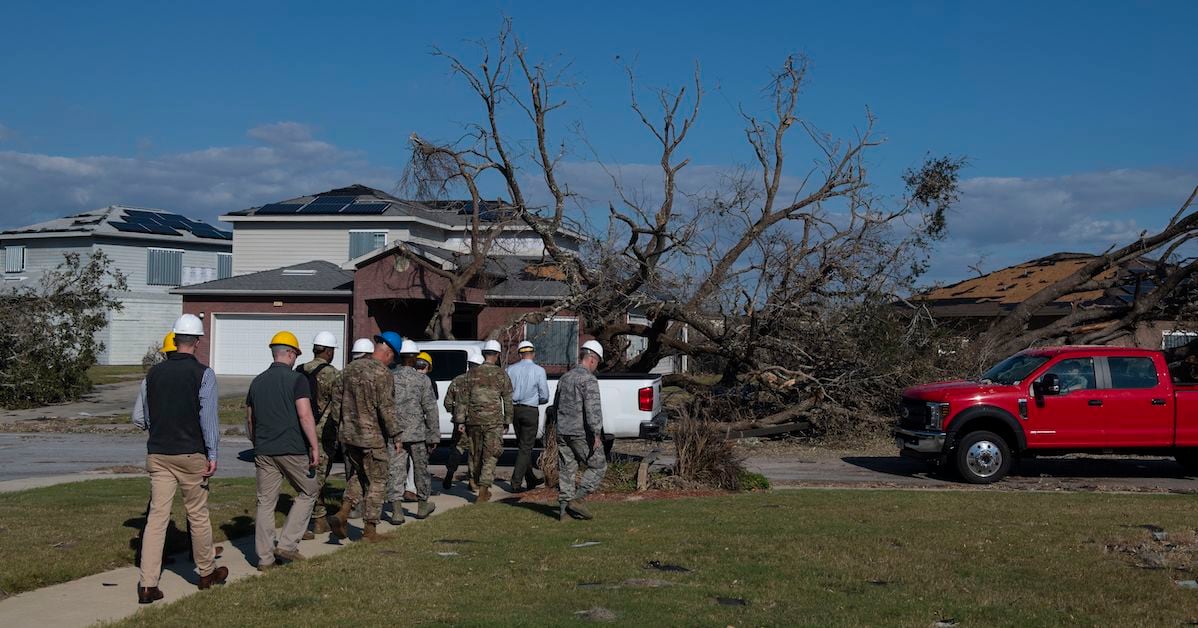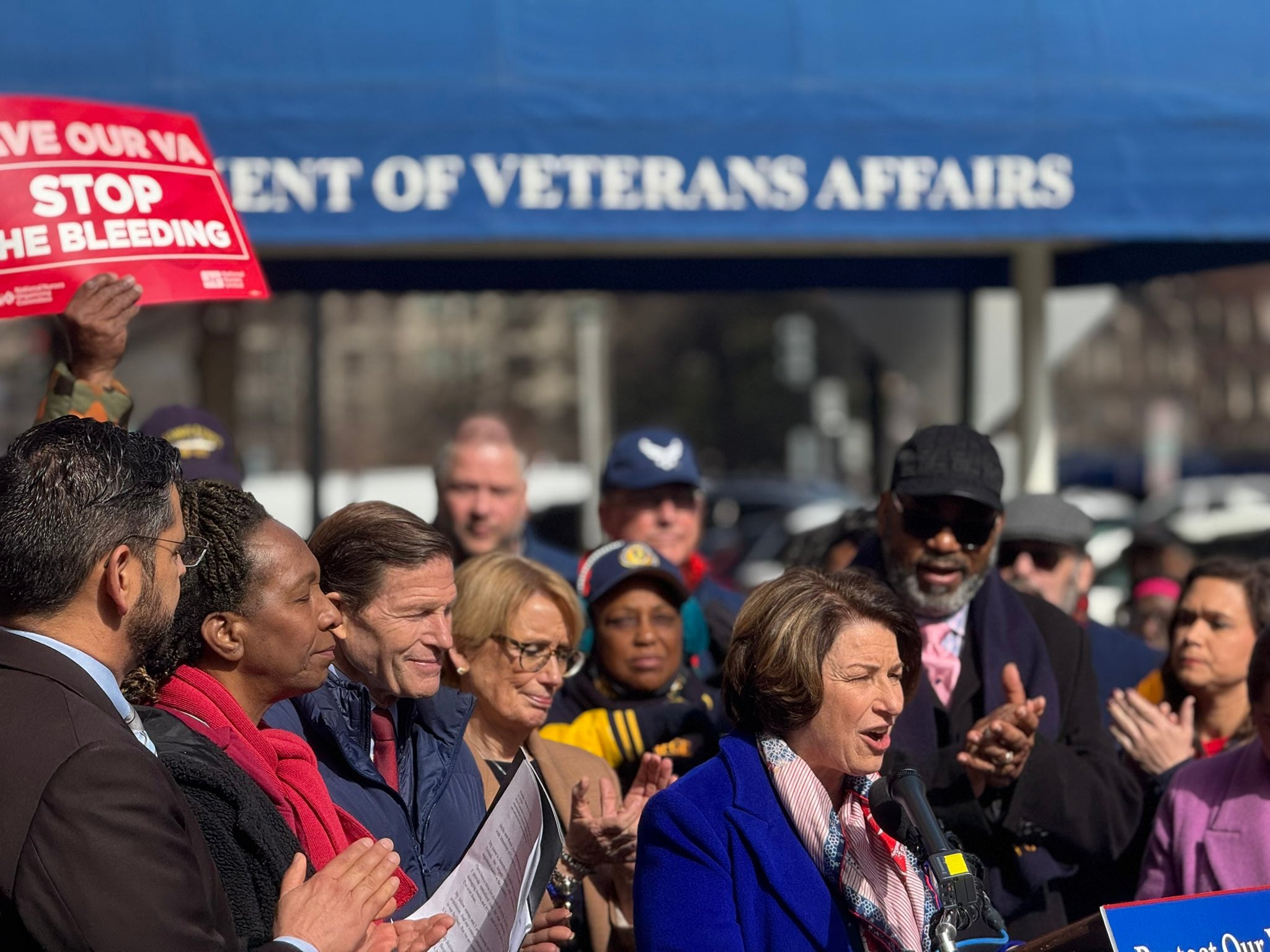After providing nearly $2 million in assistance to service members and retirees facing financial hardships in the wake of Hurricane Florence, the military relief societies have geared up to help those affected by Hurricane Michael.
The requests are starting to come in for financial assistance related to Hurricane Michael. On Oct. 16 alone, Air Force Aid Society provided more than $600,000 in assistance, said John Hopper, a retired Air Force lieutenant general who is chief executive officer of that relief society.
Most of the financial assistance related to Hurricane Florence so far ― about $1.6 million ― has been to sailors and Marines in North and South Carolina, provided by Navy-Marine Corps Relief Society, said Shelley Marshall, a retired Navy captain who is spokeswoman for NMCRS.
And the relief societies expect requests to pick up and continue as service members return to their homes and begin the process of working with the Federal Emergency Management Agency, insurance companies and others. All the relief societies are accepting donations to help with hurricane assistance.
Hurricane Michael caused massive destruction at Tyndall Air Force Base, Florida, and surrounding areas. The Air Force Aid Society is offering an initial stabilizing assistance grant of $750 for single airmen, and $1,500 for those with families, said Hopper, similar to what they provided during hurricanes Harvey, Maria and Irma.
“It’s really designed to help our airmen sort of catch their breath and figure out which way they’re going to go,” said Hopper. “Frankly, from what we think we know about the devastation, it’s probably not going to address all of their needs, but it will give them a chance to figure out where they’re perhaps going to light, and to gather up all the supporting agencies,” such as FEMA and others, as well as their insurance companies.
After this initial grant, they can still come back later for more assistance, Hopper said.
Air Force Aid Society is making an exception for Air National Guard and Reserve members who live in the affected areas, but are not on orders, Hopper said. Normally, those eligible are limited to active-duty Air Force, retired, and Guard and Reserve members who are on Title 10 orders.
With the evacuations from Tyndall, and the massive destruction at that base, this will be a far-flung effort to help airmen, Hopper said.
“It’s why we’re here. It’s what we do,” he said. “The challenge is getting it out there, because our infrastructure is affected as well.”
Normally the Air Force Aid Society operates through the airman and family readiness center on base, but that office has also been affected, he said. Airmen can go to the airman and family readiness center closest to where they have evacuated.
If they’re not near a military installation relief society, they should call the American Red Cross Service to the Armed Forces toll-free number, (877) 272-7337. “Somebody has to get the money to them. The Red Cross is set up to do that, and we are not,” Hopper said. Air Force Aid Society then reimburses the Red Cross.
All the military relief societies have long-standing reimbursement agreements with each other and with the Red Cross, to help service members who need assistance, and are not near an installation of their own service. Any service member can call the Red Cross toll-free number for assistance.
Navy-Marine Corps Relief Society
Evacuees from Panama City are beginning to find their way to Naval Air Station Pensacola, their designated meeting point, said Marshall, spokeswoman for Navy-Marine Corps Relief Society (NMCRS).
The Pensacola office of NMCRS is ready to provide financial assistance to sailors, Marines and their families affected by Hurricane Michael who need temporary lodging and other basic needs until they can return to their base, Marshall said.
Supporting those affected by hurricanes Florence and Michael has been at the top of the list of NMCRS over the last several weeks, she said. “The needs are expected to continue as insurance adjusters and FEMA get a better perspective on the extent of damages and what it will take for families to recover and rebuild.”
They’ve provided funds to active-duty and retired sailors and Marines for evacuation, basic living expenses, food, home and car repairs, and household set-ups for those relocated to temporary housing. As clients return to their homes, meet with insurance adjusters and file claims with FEMA, they’ll return to NMCRS to meet with caseworkers who will evaluate their situation and determine their ability to repay the interest-free loans. Many won’t be able to do that without facing insurmountable financial hardship, Marshall said, and the caseworker can convert the loan to a grant, which doesn’t have to be repaid.
Marshall provided examples of NMCRS assistance:
- A single Marine E-4 ordered to evacuate from Marine Corps Air Station Cherry Point, North Carolina, left his car in a public parking lot to ride with another Marine, and save money. When he returned, it took him a week to find his car, because local police had towed it so the parking lot could be cleared of storm debris. Hurricane Florence had blown the hood of his car into his windshield, but since he was deploying the following week, he didn’t have time to get the car repaired so he could store it in the long-term parking lot on base. NMCRS helped pay the towing fees, the upfront costs of a storage unit, and the cost to tow his vehicle to the storage lot.
- A Marine family’s home was severely damaged when the roof peeled off and water caused the ceilings to collapse. The family lost all their household and personal items, and can’t stay in their home. FEMA denied their initial request for assistance, and their insurance claim is being processed. NMCRS provided a grant to move his family into a rental home, buy food, and put gas in his car so he could get to work.
To date, Coast Guard Mutual Assistance has helped 141 people, mostly active-duty members, with $233,000 in assistance for issues related to Hurricane Florence ― everything from mold remediation, pest eradication, food and personal property replacement, and assistance with insurance deductibles and expenses related to displacement from their homes, said Cari Thomas, a retired Coast Guard rear admiral who is chief executive officer of that relief society. Mold, ants, snakes, rotten food and downed trees were but a few of the hazards that families faced when they returned to their homes for the first time, she said.
At least 67 members’ homes are not habitable, and 18 are considered catastrophic losses.
To date, AER has helped 115 soldiers and retirees with $104,000 in assistance related to Hurricane Florence, said C. Eldon Mullis, a retired Army colonel who is deputy director. The majority of the aid helped families to evacuate and to stabilize them afterward; they’re beginning to see requests related to rebuilding, and expect those requests to increase significantly, Mullis said. Most of the AER requests have come from the Red Cross military line, from those at Fort Bragg, North Carolina, and in Norfolk and Little Creek, Virginia.
AER has helped 25 soldiers and retirees with $19,000 in assistance related to Hurricane Michael to date.
Like the Air Force Aid Society, they’ve expanded their eligibility for hurricane relief assistance to Army Guard and Reserve soldiers who have not been mobilized, or mobilized less than 30 days, and those activated in support of Hurricane Michael relief efforts.
Karen has covered military families, quality of life and consumer issues for Military Times for more than 30 years, and is co-author of a chapter on media coverage of military families in the book "A Battle Plan for Supporting Military Families." She previously worked for newspapers in Guam, Norfolk, Jacksonville, Fla., and Athens, Ga.





